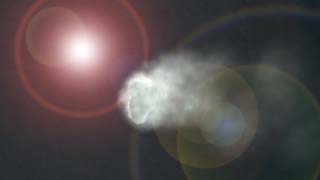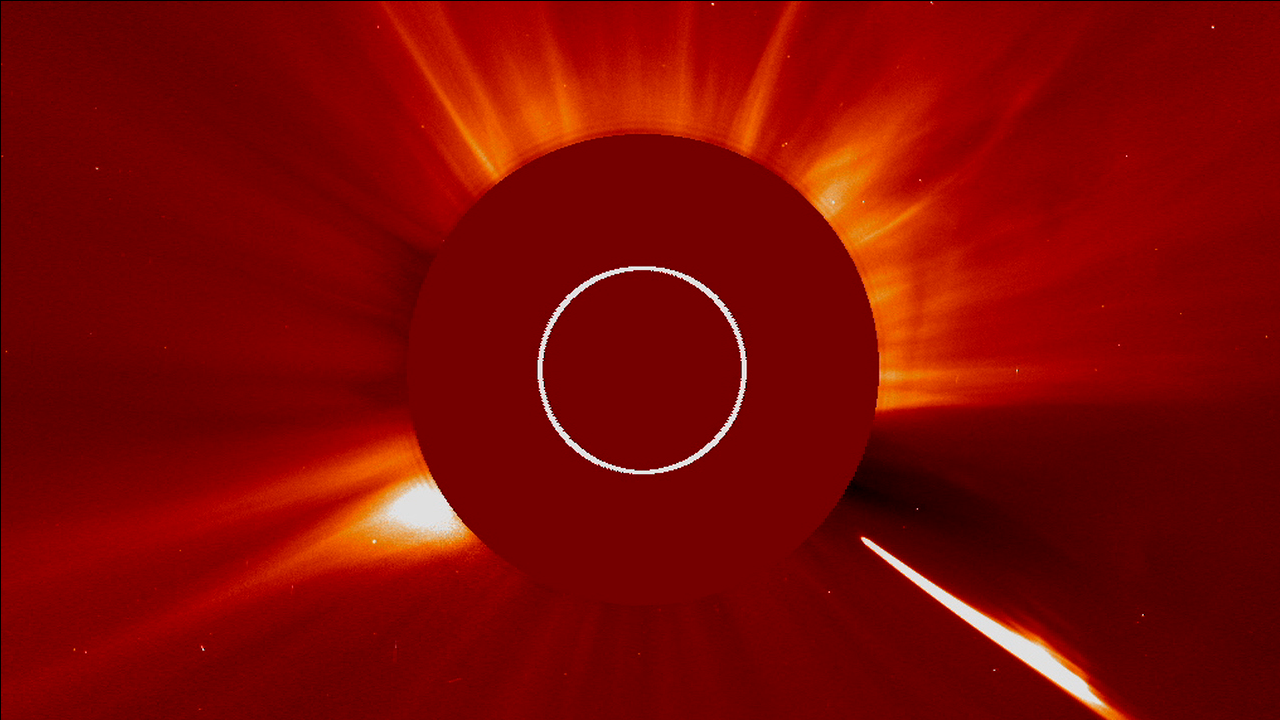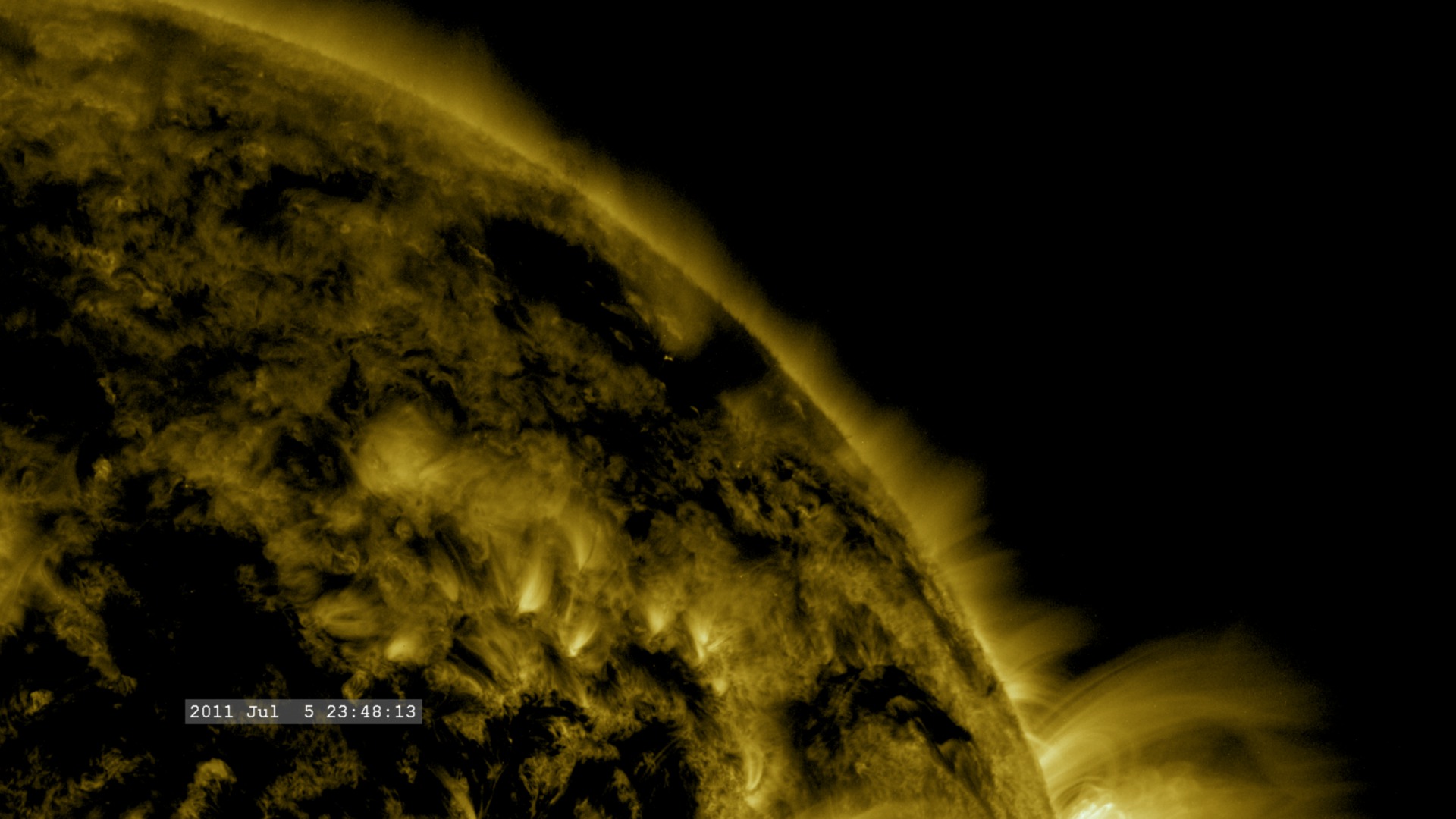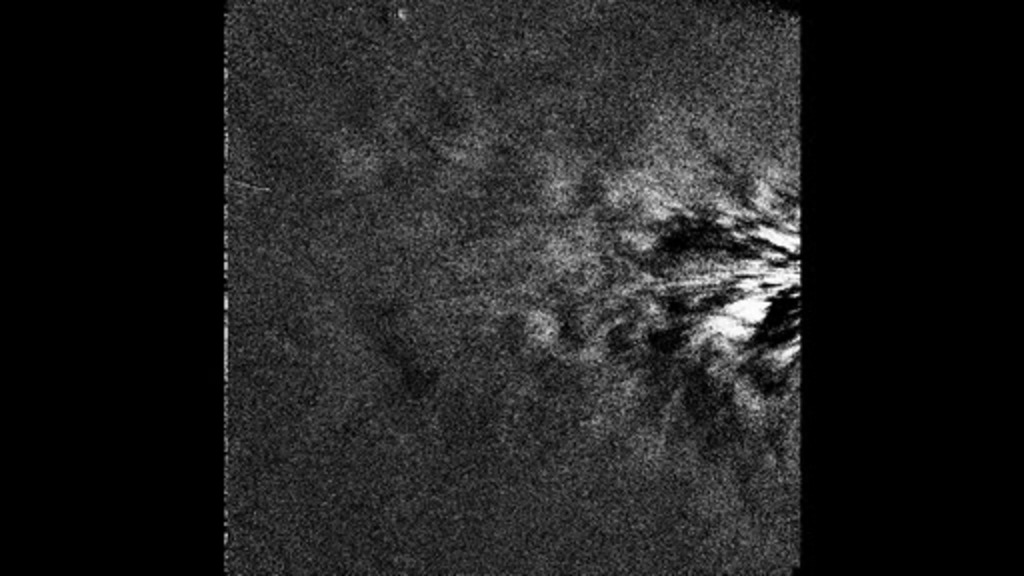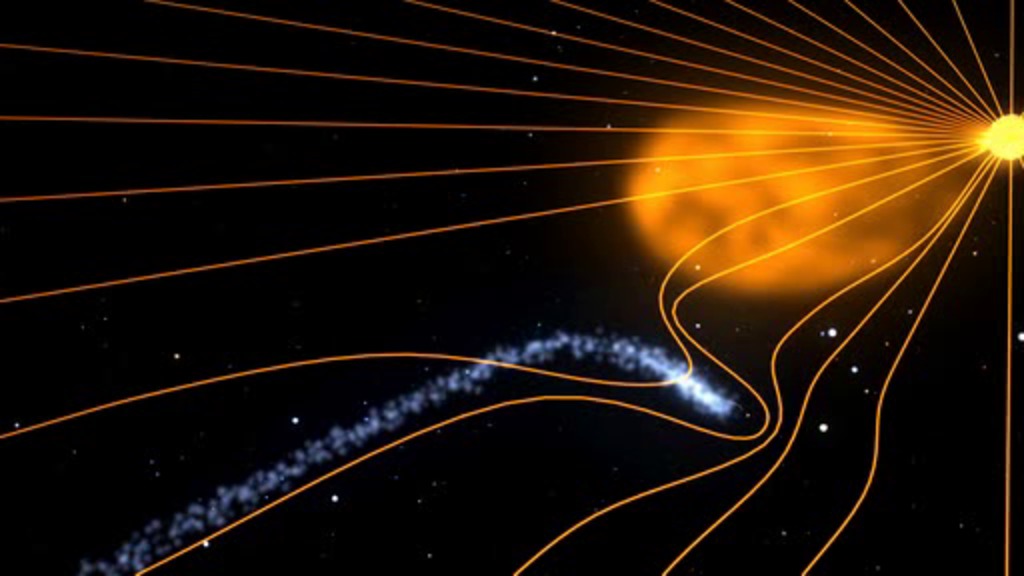Sun Grazing Comets as Solar Probes
To observe how winds move high in Earth's atmosphere, scientists sometimes release clouds of barium as tracers to track how the material corkscrews and sweeps around — but scientists have no similar technique to study the turbulent atmosphere of the sun. So researchers were excited in December 2011, when Comet Lovejoy swept right through the sun's corona with its long tail streaming behind it. NASA's Solar Dynamics Observatory (SDO) captured images of the comet, showing how its long tail was buffeted by systems around the sun, offering scientists a unique way of observing movement as if they'd orchestrated the experiment themselves. Since comet tails have ionized gases, they are also affected by the sun's magnetic field, and can act as tracers of the complex magnetic system higher up in the atmosphere. Comets can also aid in the study of coronal mass ejections and the solar wind.
Watch this video on YouTube.
For More Information
Credits
Please give credit for this item to:
NASA's Goddard Space Flight Center
-
Animators
- Scott Wiessinger (USRA)
- Walt Feimer (HTSI)
- Tom Bridgman (Global Science and Technology, Inc.)
- Chris Smith (HTSI)
-
Video editor
- Scott Wiessinger (USRA)
-
Narrator
- Scott Wiessinger (USRA)
-
Producer
- Scott Wiessinger (USRA)
-
Scientist
- William D. Pesnell (NASA/GSFC)
-
Writer
- Scott Wiessinger (USRA)
Release date
This page was originally published on Tuesday, December 4, 2012.
This page was last updated on Wednesday, May 3, 2023 at 1:52 PM EDT.
Missions
This page is related to the following missions:Series
This page can be found in the following series:Tapes
The media on this page originally appeared on the following tapes:-
Sun Grazers
(ID: 2012123)
Wednesday, December 5, 2012 at 5:00AM
Produced by - Robert Crippen (NASA)
